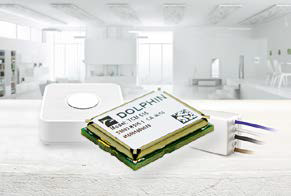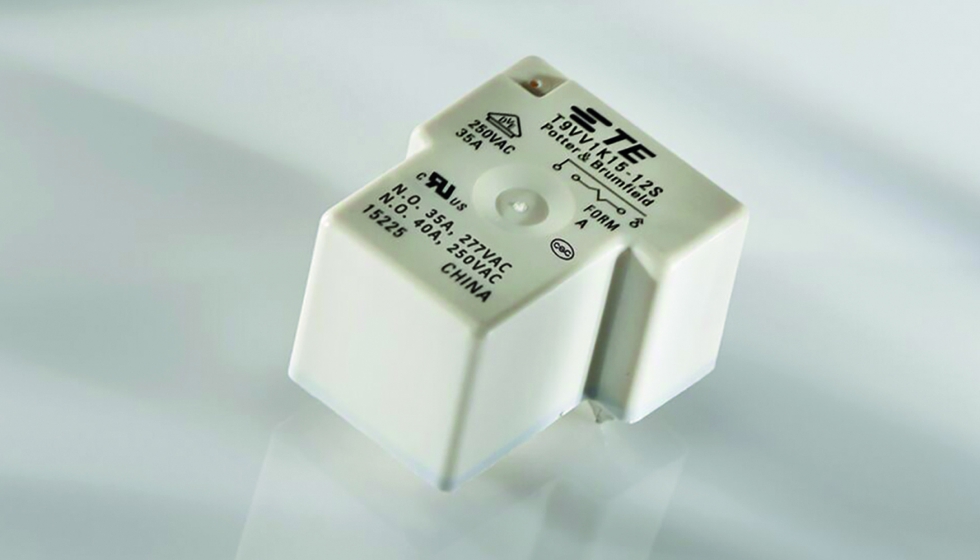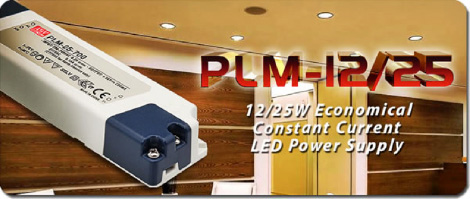The continued erosion of the prices of the lighting LED has contributed to displacing the solutions of lighting less efficient and, in that sense, it can be considered a breakthrough technology. Funded in part by the US Department of Energy, research in the lighting solid state has certainly not ceased. While some manufacturers have exited the market due to the consequent drop in average selling prices, those that remain have shown a dedication that should ensure their long-term success. Part of the research funding has also gone into organic LEDs (OLEDs) for the lighting. The question is: is it a threat or an opportunity for LEDs? The industry is striving to achieve an efficacy goal of 200 lumens/W by 2025, meeting the Haltz's law figure (whereby the cost per lumen typically falls by a factor of 10 per decade).
While LEDs seem well placed to achieve this, OLEDs still have a ways to go. However, the other advantages they offer could be translated into more widespread implementation. High-brightness LED luminaires, which are usually achieved by modules with several emitters focused in a light cone, are increasingly being used instead of lighting fluorescent and incandescent, both in architectural solutions and in offices and homes. The return on investment is generally appreciated after a predetermined number of hours in service and as LED technology improves this figure is steadily decreasing. On the other hand, OLEDs have a much shorter lifespan, are more expensive than LEDs (which in turn continue to be more expensive than LED options). lighting conventional) and offer a lower luminous power. Despite all these handicaps, its future looks bright.
The reason for the growing interest in lighting OLED can be attributed primarily to aesthetics and is based on the more even light distribution and slimmer formats that this technology can offer. systems lighting OLEDs are much thinner than LED lights because instead of incorporating diffusers or reflectors, the light is emitted directly from the surface. They can also be manufactured in different sizes and shapes to suit specific installation requirements, while providing a more natural light source over large areas rather than a single 'point light'. It's not hard to imagine why these features capture the attention of interior designers and discerning consumers. Undoubtedly the effectiveness of lighting for OLEDs is still much lower than for LEDs, around 60-80 lumens/W for OLEDs compared to the typical 200 lumens/W for LEDs.
However, the core technology has improved in recent years and the continued introduction of active matrix OLED (AMOLED) technology into TV screens, smartphones and other portable devices means that investment in this area remains strong. All these factors are expected to have a positive impact on the development of OLED technology in relation to the applications of lighting. Although there are far fewer manufacturers of OLED than of LED, companies like LG Display (Korea) and OLEDworks (USA) are devoting considerable engineering efforts to push this technology forward, with products from lighting commercially available at DIY and home construction stores. Although the large-scale availability of OLED panels is still hampered by cost, this technology is beginning to be used in hybrid luminaires that use LEDs and OLEDs to provide a more natural light source.
Let's get smart
La lighting solid-state, both in the form of LEDs and OLEDs, is driving the trend towards lighting "smarter". We already know that the possibility of attenuating the equipment of lighting It has been used for a long time as a means of saving energy. If these types of control mechanisms are incorporated into a building management system (BMS), such savings can be realized automatically. Although most BMS implementations are custom designed, a recent innovation could allow all BMS systems to be networked together. lighting practically overnight. The latest Bluetooth specification incorporates mesh networking capabilities, which the Bluetooth Special Interest Group says are ideal for adding an intelligent network connection to public transport facilities. lighting already existing. The mesh network uses each device as a node, and each node has the ability to receive and relay messages from every other node on the network.
This approach is well suited for implementation in electrically noisy environments, where the small “hop” between nodes helps to maintain the signal, even though the RF element is not very powerful. Low-power wireless networks are becoming more common in the Internet of Things (IoT) and the addition of mesh networks to the Bluetooth specification could help this technology make the leap from wearable devices to wearable accessories. lighting. However, it has significant competitors in this field of application. While Bluetooth can offer interoperability, breakthrough innovations like Bluetooth accessories lighting Networking often requires industry leaders to make the first move. For commercial reasons, these early adopters may need to keep their solutions under patent, which unfortunately can have a negative effect on the application rate.
One example is the Lutron Vive platform that uses the company's Clear Connect wireless protocol for communications between sensors, controllers and load switches and Wi-Fi in the main hub. Although the hub offers BACnet compatibility, it is a closed network for all intents and purposes. To avoid the disadvantage of a closed system, others have turned to ZigBee as the wireless protocol for their networking equipment. lighting networked, even on proprietary products. One example is Daintree Networks' control platform, ControlScope, which uses ZigBee as its base protocol.
Compliance with the ZigBee standard must guarantee a certain level of interoperability between systems. In the list of manufacturers that intend to offer compatibility with the ControlScope platform we find EuControls, Iventronics, Magtech, MMB Networks and Samsung. Daintree has also worked with Osram Sylvania to help the latter develop a wireless, ControlScope-compatible interface module that can be retrofitted to the luminaires. As long as the controller of the equipment of lighting has a 12V output, it can be re-adjusted to provide connectivity to any equipment lighting, which allows you to be part of a network of lighting intelligent.
EnOcean is an ultra-low power wireless technology designed to be self-powered and operating in the sub-1 GHz band; Transceivers do not have batteries, but instead use stored energy to send and receive short messages wirelessly. The proprietary technology is managed by an industry body and continues to evolve in the smart building industry. The EnOcean Alliance, which has a large number of members across the value chain, is also working with the ZigBee Alliance to create solutions that allow networks of lighting Solid-state drives based on both technologies. This can only mean a consolidation of the positioning of the networks of lighting smart.
Conclusions
The energy savings offered by the lighting Solid-state power is clearly significant, and as it is implemented, the benefits will not only mean lower electricity bills for consumers and businesses, but also less impact on the environment. Advances in both central issuer technology and supporting connectivity will be critical to its progression.







